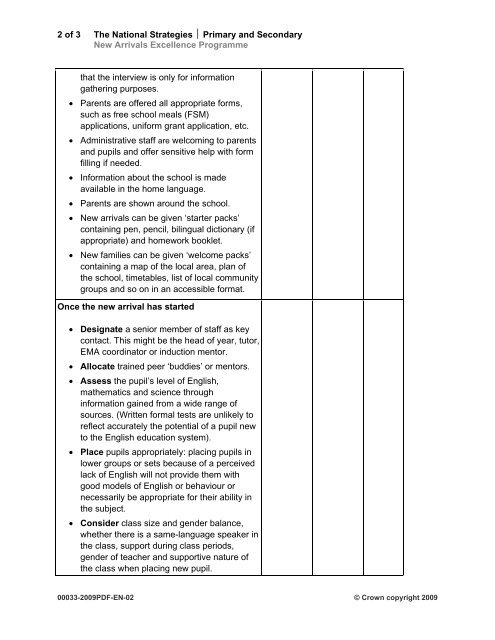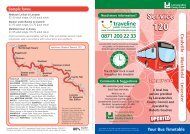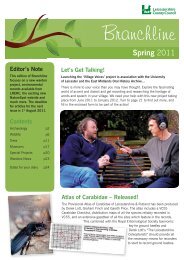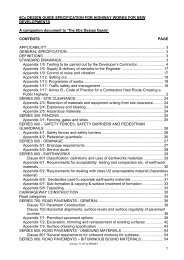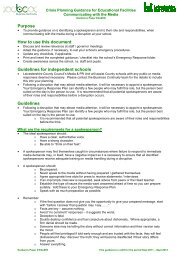Primary effective induction checklist
Primary effective induction checklist
Primary effective induction checklist
You also want an ePaper? Increase the reach of your titles
YUMPU automatically turns print PDFs into web optimized ePapers that Google loves.
2 of 3 The National Strategies <strong>Primary</strong> and Secondary<br />
New Arrivals Excellence Programme<br />
that the interview is only for information<br />
gathering purposes.<br />
Parents are offered all appropriate forms,<br />
such as free school meals (FSM)<br />
applications, uniform grant application, etc.<br />
Administrative staff are welcoming to parents<br />
and pupils and offer sensitive help with form<br />
filling if needed.<br />
Information about the school is made<br />
available in the home language.<br />
Parents are shown around the school.<br />
New arrivals can be given ‘starter packs’<br />
containing pen, pencil, bilingual dictionary (if<br />
appropriate) and homework booklet.<br />
New families can be given ‘welcome packs’<br />
containing a map of the local area, plan of<br />
the school, timetables, list of local community<br />
groups and so on in an accessible format.<br />
Once the new arrival has started<br />
Designate a senior member of staff as key<br />
contact. This might be the head of year, tutor,<br />
EMA coordinator or <strong>induction</strong> mentor.<br />
Allocate trained peer ‘buddies’ or mentors.<br />
Assess the pupil’s level of English,<br />
mathematics and science through<br />
information gained from a wide range of<br />
sources. (Written formal tests are unlikely to<br />
reflect accurately the potential of a pupil new<br />
to the English education system).<br />
Place pupils appropriately: placing pupils in<br />
lower groups or sets because of a perceived<br />
lack of English will not provide them with<br />
good models of English or behaviour or<br />
necessarily be appropriate for their ability in<br />
the subject.<br />
Consider class size and gender balance,<br />
whether there is a same-language speaker in<br />
the class, support during class periods,<br />
gender of teacher and supportive nature of<br />
the class when placing new pupil.<br />
00033-2009PDF-EN-02 © Crown copyright 2009


